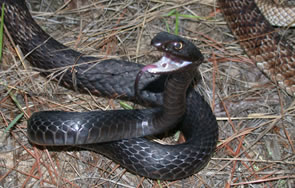
Masticophis flagellum
Photo by JD Willson
Description: Coachwhips are the longest snakes found in North Carolina. They are very thin, and, like racers, are known for their speed. The coachwhip is generally black on the head and front part of the body, but becomes paler towards the rear. Its eyes are usually gold, red, or orange. The coachwhip gets its name from its tail which resembles a braided whip. The young are colored similarly to juvenile racers, although somewhat lighter, with dark brown spots on their gray or light brown back.
Feeding/Diet: Coachwhips have large eyes and are fast and agile hunters. They often hold their heads well above the ground while searching for lizards, mice, and other snakes. They are not constrictors, but simply chase down and swallow their prey alive.
Habitat/Range: Coachwhips are found most abundantly in the Sandhills and portions of the southeastern Coastal Plain.
Reproduction: The coachwhip lays 8–15 eggs, which are covered with small bumps, during early to mid summer.
Miscellaneous: Like racers, they will often climb into trees or bushes when pursued. If captured, they will usually thrash around a may bite the captor repeatedly if given the chance; stories of this species whipping people to death with their tails are obviously just myth. Because so much of their natural habitat has been destroyed by development, coachwhips are a species of conservation concern in North Carolina.
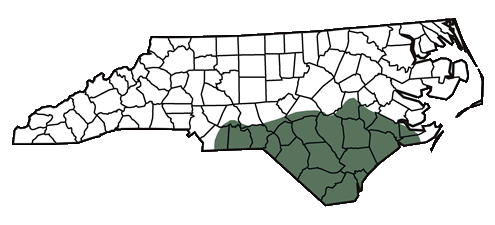
The shaded region represents the range of the coachwhip in North Carolina.
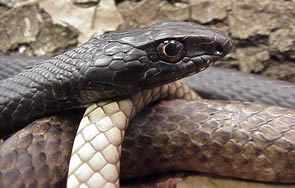
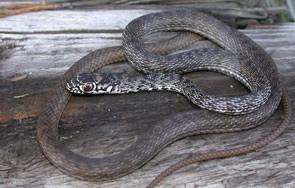
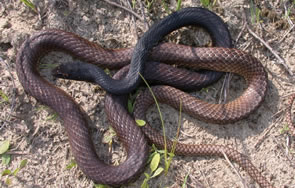
A juvenile coachwhip.
Photo
by JD Willson
Photo by JD Willson
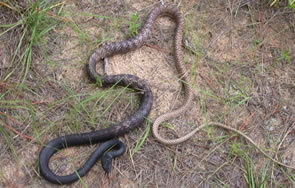
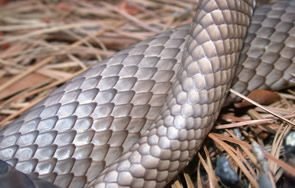
Photo by JD Willson
This website created by: J. Willson, Y. Kornilev, W. Anderson, G. Connette and E. Eskew.
For comments or questions contact M. Dorcas: midorcas@davidson.edu.
M. Dorcas homepage: http://bio.davidson.edu/dorcas
Davidson College, Davidson, North Carolina 28035-1719.
Text and maps from: Dorcas, M. E. 2004. A Guide to the Snakes of North Carolina. Davidson College - Herpetology Laboratory, Davidson, NC. – Copyright by Michael E. Dorcas.
Partial Funding for this website provided by a Associate Colleges of the South, National Science Foundation, and Duke Energy.
